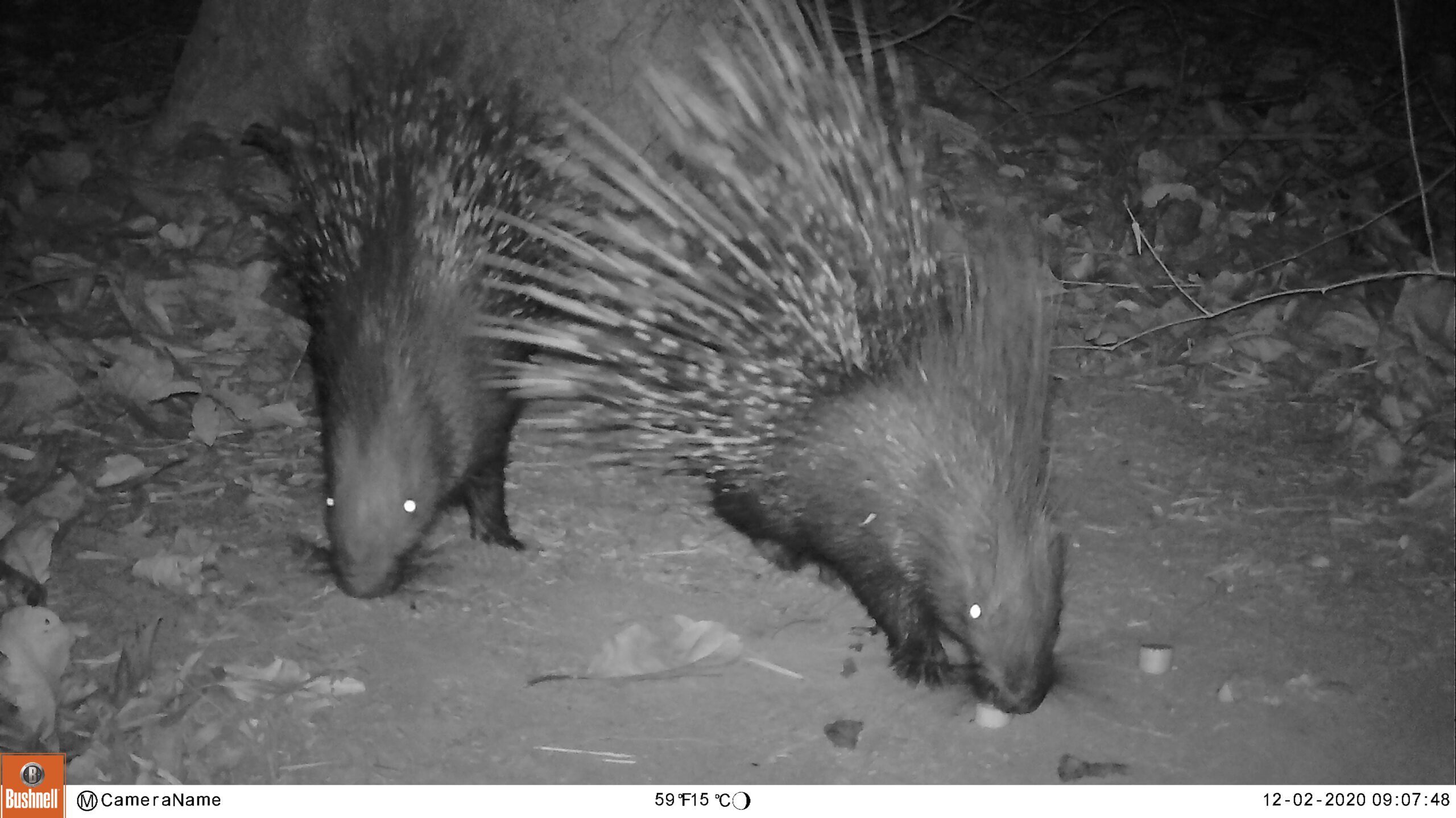Of all the wonders of nocturnal species in India, porcupines are the prickliest rodent found in the Indian Subcontinent. In Latin, porcupines are known as ‘Quill Pig’ or ‘Thorn Pig’ as they possess a coat of needle-like quills all across their body which makes them an uncomfortable meal for their predator.
Their quills lie flat on their body until the creature is threatened; they erect their quills and rattles to warn the attacker. If the danger still persists they run backwards, embedding the quills in the flesh of the predators as they cannot shoot them, which can be lethal to death.
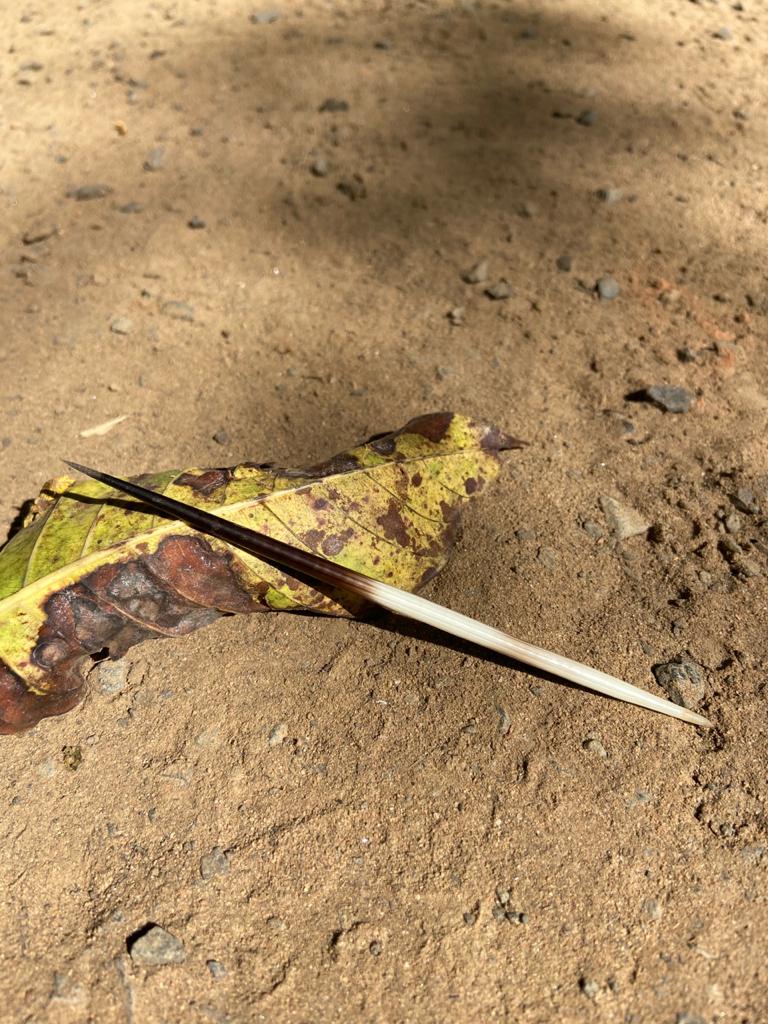
This slow-moving creature is a member of 2 different family; Erethizontidae and Hystricidae i.e. New World Porcupine and Old World Porcupine.
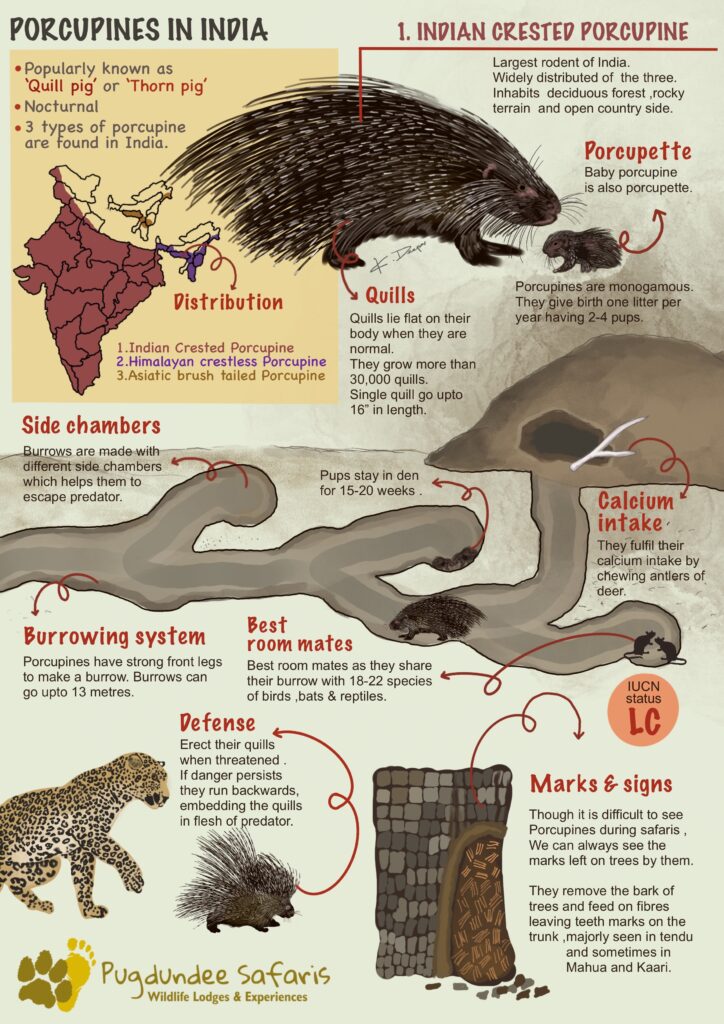
New world Porcupine is mostly arboreal (lives on trees) and are found in North, Central and South America. They have a complete collar bone, molars, a distinctive upper lip and a strong potent tail which helps them to balance on the tree tops. Their coat is boasted with barbed quills which are mixed with long and soft hairs.
Not a true nocturnal species, they can be found hanging around in the daylight. Cities like Canada, America, Mexico etc. are home to this prickly plant eater.
Old World Porcupine ranges over the whole of Asia, Africa and the south of Europe. This land dwelling creature has a cylindrical body with quills lying flat on their body without intermingling with its hair. It has a very short tail (not all of them), strong incisors with imperfect collar bones and are known to make rattling noise when they are on move.
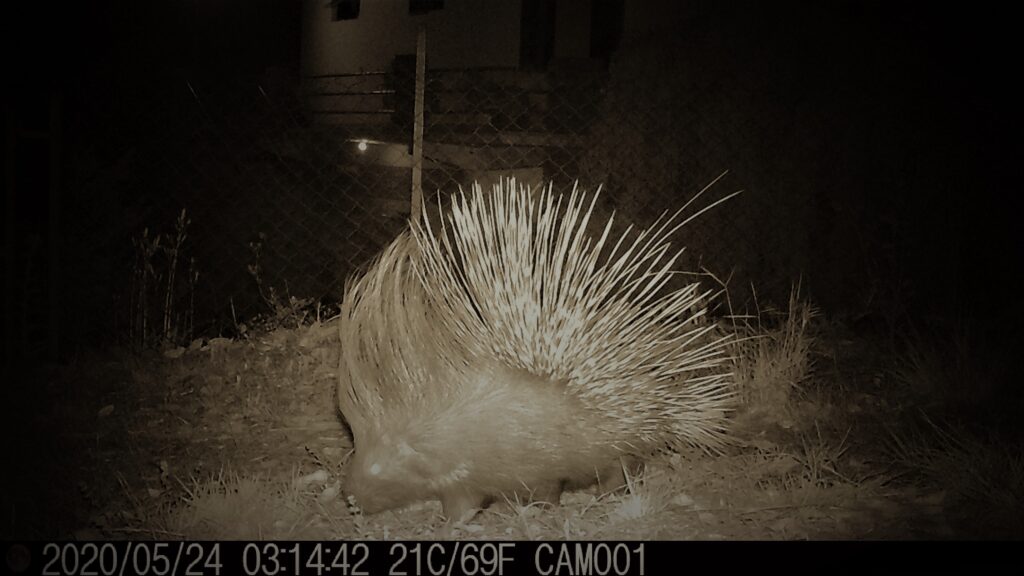
Both of them Erethizontidae and Hystricidae are herbivore. Their diet consists of flowers, grass, roots, tubers, berries, and their most preferred; bark of a tree. As they don’t eat meat they fulfil their calcium and mineral intake by chewing the bones of animals. Few species of porcupine will feed on small insects and reptiles if available.
Now if we narrow down to India, we have three species of porcupine which are spread all across the Indian Subcontinent.
Indian Crested Porcupine (Hystrix indica)
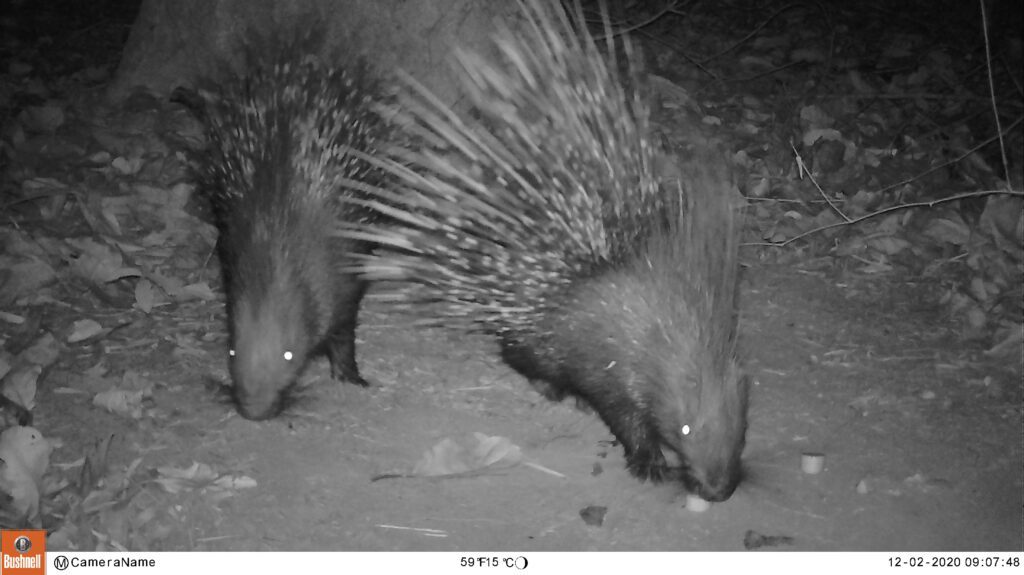
Indian Crested Porcupine is the largest rodent of India, which is widely distributed in the Indian Subcontinent. A solitary creature locally known as Sahi inhabits deciduous forest, rocky terrain and opens countryside. This rugged rodent is covered with thick long quills which may reach up to 16 inches in length.
Having a lifespan of 18 to 20 years, this rattler is about 3 feet long with a very short tail and spines flowing from forehead to all over its body. This large herbivore is a nocturnal species which is often seen foraging at night, making a grunting sound while feeding on plants, fruits and roots. They have large incisors which grow constantly are a prominent indicator of their feeding habit. Porcupines follow monogamy and females produce a single litter per year having 2-4 pups. The pups stay in den for 15 to 20 weeks while the parents take care of them and they usually leave their den once they are sexually active after 2 years.
Known to be the incredible architect of the wild as their burrow can go up to 13 metres long. Their front legs are strong enough to make a burrow this long with different side chambers which also helps them to disappear if a predator is around. By far the best room-mate one can ever get, as they share their burrow with 18-22 different species of birds, bats and reptiles.
Being the least concern species of IUCN Red List under Schedule IV of the Wildlife Protection Act 1972, Indian Crested Porcupine is one of the poorly studied animals which make them vulnerable to death, as few places in India consider them as pest and are hunted illegally for their bushmeat.
Our lodge in Bandhavgarh has regular sightings of Crested Porcupine and here is a recent snippet of our camera trap, where we caught them sniffing for food.
Best places to see Porcupines are Bandhavgarh National Park, Panna National Park, Corbett National Park and Ranthambhore.
Himalayan Crestless or Hodgson’s Porcupine (Hystrix brachyura)
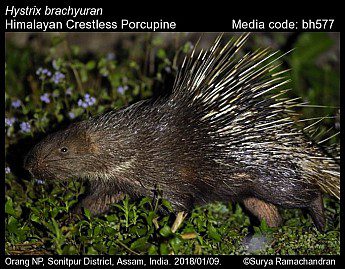
The major distinctive character of the Hodgson’s Porcupine is they have a shorter dorsal crest, very short tail with white quills resting on the back of the porcupine. A petite looking rodent with a dorsal chest and thinner quills compared to crested porcupine. Another distinctive character is they have blunt muzzle. Their tail does not rattle as much as the crested porcupine tail does.
This spiny creature inhabits forest fringes and rocky outcrops and is found in the North-Eastern Region of Assam, Meghalaya, Sikkim and West Bengal.
Best places to see Himalayan Crestless Porcupine is Manas National Park in Assam and Orang National Park in Assam.
Asiatic Brush-Tailed Porcupine (Atherurus macrourus)
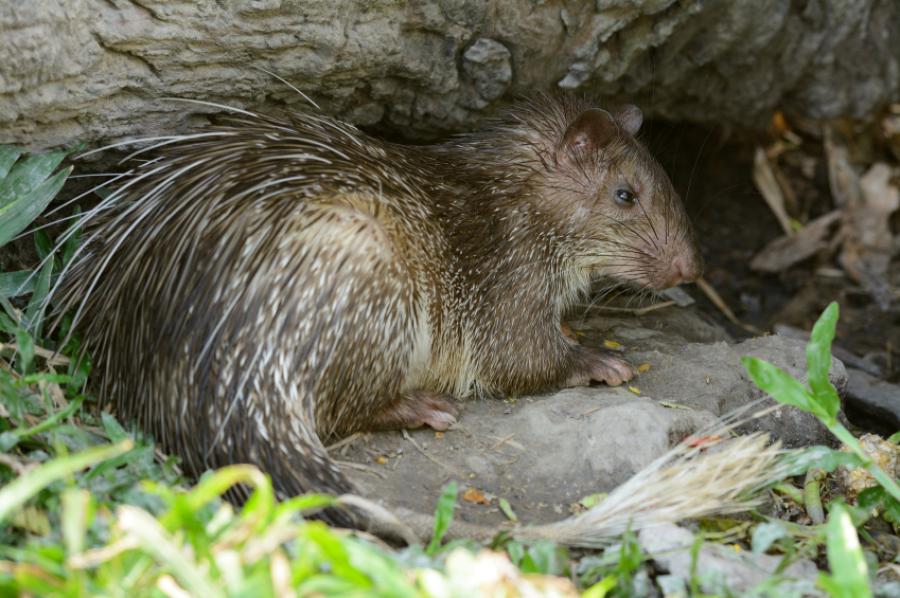
The smallest and the rarest of all the porcupines found in India. Having a long spineless tail which is one third size of its body and very small quills beaded on its body. They are highly nocturnal and are found in the Subtropical and Tropical Forest especially where there is a lot of cane, bamboo and palms.
A rarely seen rodent is widely distributed in North-east region of India but was only recorded in Assam, Arunachal Pradesh, and Meghalaya.
Best Place to see these fascinating species is Namdapha National Park in Arunachal Preadesh, Garampani Wildlife Sanctuary in Assam and Intanki National Park In Nagaland.
Facts About Porcupine
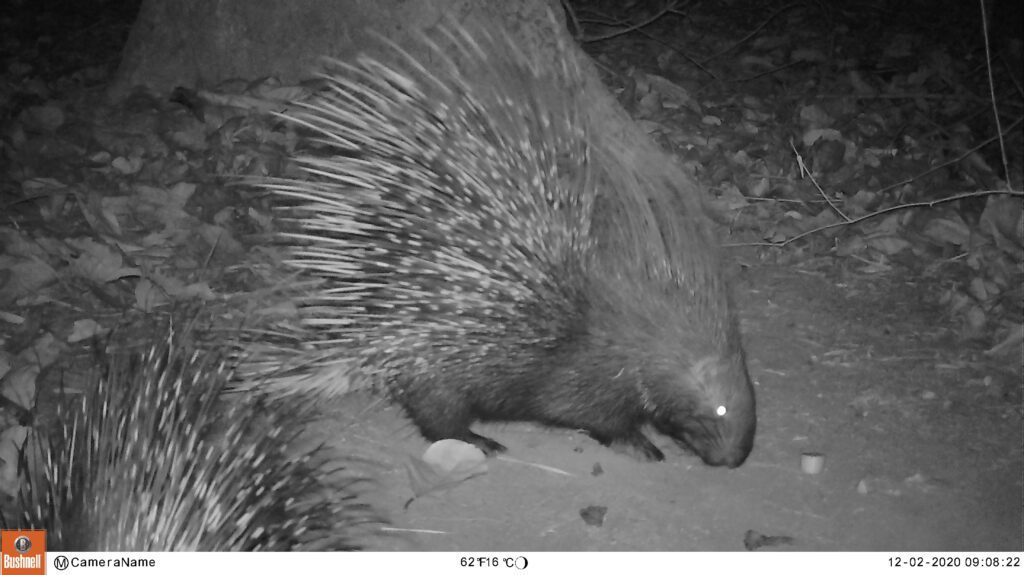
- Porcupines are accomplished swimmers.
- They fulfil their calcium intake by chewing the antlers of Deer, which enhances the growth of their spines.
- Their quills possess antibiotic properties, which is used by the porcupine when they prick themselves by their own spines.
- One of the highly traded species in India due to the superstitious belief.
- Porcupines grow more than 30,000 quills on their body and a baby porcupine is known as Porcupette.
- Porcupine is the third largest rodent in the world.
- They love salt, wherever they find salt they’ll chew up the whole thing.
Written By: Himani Singh Chouhan, Naturalist at Denwa Backwater Escape.
Contact us for bespoke safari experiences.
Email : [email protected] [email protected] Call : +91-11-4013 6332.
Kanha Earth Lodge – Kanha | Pench Tree Lodge – Pench
Kings Lodge & Tree House Hideaway – Bandhavgarh
Ken River Lodge – Panna | Denwa Backwater Escape – Satpura

